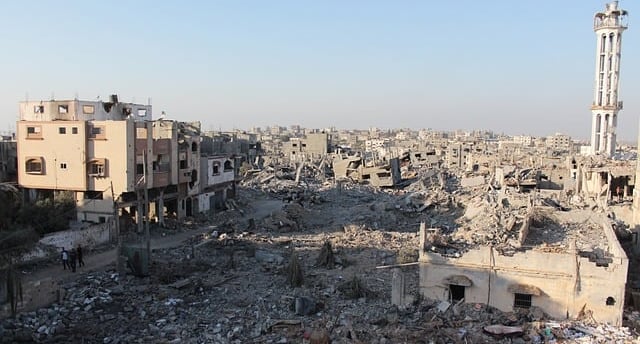Joe Sacco's 'Footnotes on Gaza"
MIDDLE EAST/ AFRICA


Exploring Footnotes in "Gaza" by Joe Sacco
Joe Sacco, a renowned graphic journalist, is known for his exceptional work on the Middle East. One of his notable works is "Gaza," a graphic novel that offers a unique perspective on the troubles faced by Palestinians.
The Role of Footnotes
Footnotes serve as a valuable tool in providing additional context and information to the reader. In "Gaza," Sacco utilizes footnotes to offer a deeper understanding of the events and people depicted in his illustrations. These footnotes not only enhance the reader's comprehension but also add layers of authenticity and credibility to the storytelling.
Sacco's footnotes often include historical facts, personal anecdotes, and interviews, allowing the reader to gain a more nuanced perspective on the Palestinian experience. By incorporating these details, Sacco ensures that his work is not only visually captivating but also intellectually stimulating.
Depiction of Palestinians
One of the remarkable aspects of Sacco's work is his portrayal of Palestinians. Through his intricate illustrations and meticulous research, he humanizes the individuals he encounters, shedding light on their struggles, hopes, and dreams.
Footnotes play a crucial role in enriching the depiction of Palestinians in "Gaza." They provide a platform for Sacco to share the stories and experiences of the people he meets, allowing readers to connect with them on a deeper level. These footnotes serve as a reminder that behind every face in the illustrations, there is a unique and complex individual with their own narrative.
Authenticity and Ethical Responsibility
Sacco's use of footnotes not only adds authenticity to his work but also showcases his ethical responsibility as a journalist. By including sources and references in his footnotes, he ensures that his work is grounded in research and verified information. This commitment to accuracy and transparency is essential when dealing with sensitive topics such as the Israeli-Palestinian conflict.
Furthermore, footnotes allow Sacco to acknowledge his own subjectivity and positionality as an outsider. He acknowledges his limitations and biases, making his work more credible and respectful towards the people he portrays. This self-awareness is evident in the footnotes, where Sacco reflects on his own experiences and challenges as a journalist in the region.
In conclusion, Joe Sacco's use of footnotes in "Gaza" adds depth and authenticity to his graphic journalism. Through these footnotes, he provides readers with a wealth of information, enriching their understanding of the Palestinian experience. Moreover, Sacco's commitment to ethical storytelling and his depiction of Palestinians as multi-dimensional individuals make "Gaza" a powerful and thought-provoking work.
#middleeast #gaza #africa #israel
